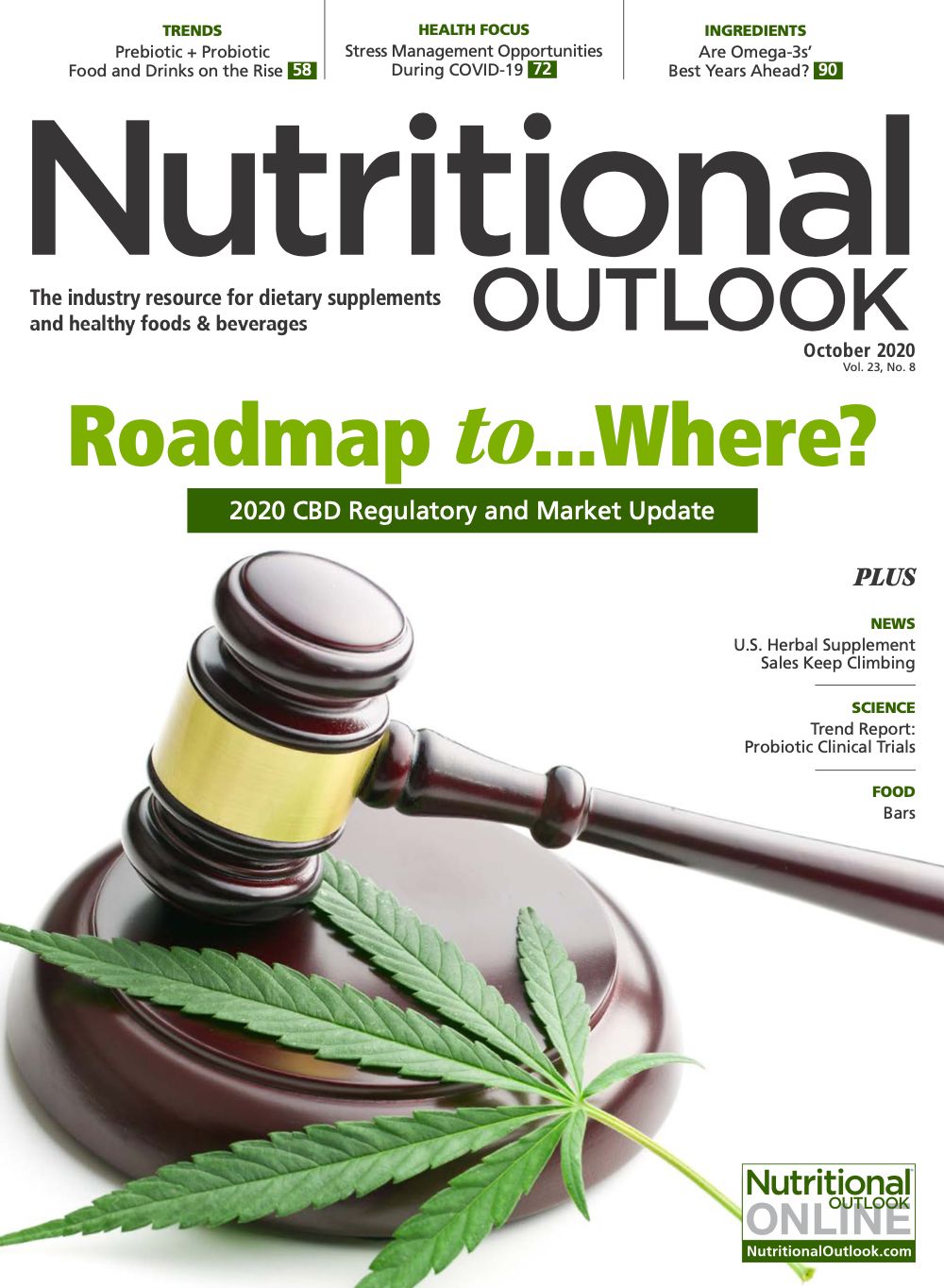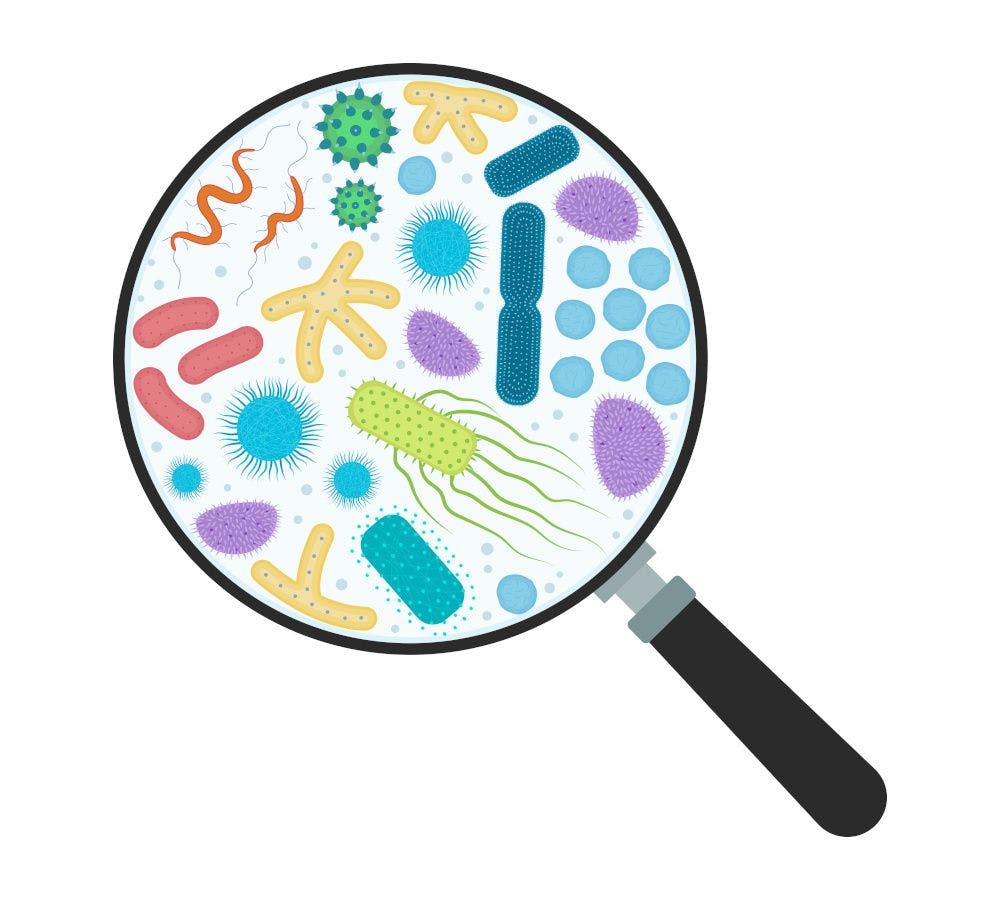Beyond CBD: Exploring other hemp cannabinoids’ health benefits
As consumers—and researchers—grow curious about hemp’s other cannabinoids, what health gains might they find?
Photo © AdobeStock.com/contentdealer

By all appearances, hemp-derived CBD, or cannabidiol, has one heck of a PR team. How else would you explain why the cannabinoid generated more internet search queries than Kanye West, the NBA, Taylor Swift, the keto diet, Modern Family, or—you guessed it—Jesus, at least according to a recent cannabisMD analysis1 of searches across social media and the web?
“And after people search for information about CBD,” notes Tom LaForge, head of consumer research, Charlotte’s Web (Boulder), “they end up talking about it with friends and family. When a product works, we like to share the news so others can get relief, too, right?”
And that, perhaps more than any marketing campaign, may account for CBD’s meteoric rise in the public’s perception. But CBD is hardly the only beneficial cannabinoid in town—or, for that matter, in hemp. An alphabet soup of more than 120 documented cannabinoids populate the cannabis plant, and researchers are only now beginning to learn what they do, and how.
Consumers will be learning about them, too. “We’re already seeing some new products featuring other cannabinoids hitting shelves, and this is causing ears to perk up,” LaForge says. “Scientific investigation into these compounds is just getting underway, but the public should be hearing more about them in the months and years ahead.”
A Lot Going on in There
Chemically speaking, cannabis has a lot going on inside—and CBD is just the start. Researchers have identified more than 500 distinct molecules that the cannabis plant produces, and they’re still finding more.
For example, says Lex Pelger, director of education, CV Sciences (San Diego, CA), “The terpenes found in cannabis are the molecules that produce the smells of most of the plants we love, and the cannabis plant can produce many of them.”
Then there are the amino acids that cannabis uses to build proteins, he says. Sugars and hydrocarbons supply fuel, flavonoids and pigments change the plant’s appearance, and a host of vitamins and minerals do their part to keep it working, too.
“Combined with other phytocompounds like chlorophyll and phenols and, most of all, a rich array of fatty acids that the human body uses to make its own endocannabinoids”—more on those in a moment—“these substances all make hemp an unrivaled superfood,” Pelger says.
The Body’s “Master Switchboard”
Still, he concedes, “The cannabinoids get all the press.” And not without reason, considering that many of them—from CBD to THC (tetrahydrocannabinol) and beyond—interact with receptors in our bodies’ own endocannabinoid system, or ECS.
The ECS is a complex cell-signaling system that comprises not only cannabinoid receptors and their associated proteins but endocannabinoids themselves—that is, cannabinoid compounds that our bodies produce endogenously, even if we’ve never come within striking distance of a cannabis plant.
Jen Palmer, ND, director of education at Charlotte’s Web, describes the ECS as “the master switchboard of the body,” influencing everything from the cardiovascular, nervous, and endocrine systems to our skin condition, appetite, sleep patterns, and immunity. Its endgame: maintaining balance by moderating our bodies’ systems “when they become overactive,” Palmer says.
Tripping Receptors
Scientists only began teasing out how the ECS does all this in the 1990s, Pelger notes, which is when they first discovered the system’s two best-known receptors, CB1 and CB2, and its two key endocannabinoid neurotransmitters, anandamide and 2-arachidonoylglycerol.
These compounds trigger the ECS’s cannabinoid receptors, producing—at least in the case of anandamide—largely desirable results. In fact, Palmer notes, anandamide is known as “the ‘bliss molecule’ for its calming, centering effects” and floods our systems following happy pursuits like exercise, meditation, and yoga.
But because our endocannabinoids chemically resemble their phytocannabinoid cousins found in the cannabis plant, the two groups of molecules often trip the same receptors, says Pelger, who adds that it was early research into the mechanics of the ECS “that catalyzed the work being done now on how cannabinoids from the plant interact with the endocannabinoids we all produce within each of us.”
CBD at the Center
That research continues, as does investigation into why the cannabis plant evolved to produce so many cannabinoids in the first place. “Our best guess,” Pelger says, “is protection against insects or UV rays in the plant. Regardless, we do know that these phytocannabinoids cause a huge array of effects in humans.”
And we know more about those effects with respect to CBD than with any other phytocannabinoid.
That makes sense to Michael Bryce, cofounder and global chief marketing officer, Healist Advanced Naturals (New York City). “Behind THC, CBD is the most abundant cannabinoid found in the cannabis plant,” he says, “and is typically the most abundant cannabinoid found in hemp”—which the 2018 federal Farm Bill defines as cannabis containing 0.3% or less THC.
This abundance makes CBD easier to extract from the plant—and in higher concentrations, to boot—than other cannabinoids. And that, says Bryce, helps explain why “scientists started working to understand CBD before they tackled other phytocannabinoids.”
“It Works”
But there’s another reason why CBD gets “the lion’s share of attention,” Pelger says: “Because it works. Its popularity endures because a flood of anecdotes is confirmed every week by new science examining CBD and finding many different effects at the biochemical level. That seems to be why CBD can function like a Swiss Army knife for the body and brain.”
Consider its stimulatory effects on the neurotransmitters serotonin and dopamine, which Bryce notes “are known to support mood regulation.” CBD has also demonstrated significant neuroprotectant, anti-inflammatory, and antioxidant capacities, he adds.
Palmer notes that among the most common reasons people turn to CBD is to “maintain that sense of calm. When stress rises—causing occasional anxiety—hemp-derived CBD can provide relief by balancing the nervous system.” She points to published research2 showing that taking CBD prior to public speaking helped calm subjects while also promoting normal heart rate and blood pressure during their speeches.
“CBD may have additional effects,” adds Bryce, “and additional research is needed to determine which cellular mechanisms are related to specific benefits. But the potential for harnessing these properties to improve health and wellbeing is only beginning to be discovered.”
Major Minors
So you can’t blame scientists—or the rest of us—for focusing on CBD. “Thousands of research papers have been churned out looking into its chemistry, pharmacology, and effects in mammalian systems,” Pelger says.
But when it comes to cannabis’s “minor cannabinoids,” he continues, “For some, we only have a few dozen research papers published about their effects.”
In fact, we call them “minor” not as a reflection of their potency, he notes, but because cannabis prohibition effectively closed the door on studying them in the natural, bioactive form in which they occur in the plant itself.
“So when people say that cannabis needs more research,” Pelger concludes, “that’s especially true of these minor cannabinoids. Like some rare salamander or galaxy, we know they exist, but not how they work or what they do. Each represents a potential new path for modulating the endocannabinoid system.”
The Entourage Effect?
Palmer agrees, adding that the concerted efforts of all of cannabis’s compounds—not just CBD—may generate the best results.
As she points out, “It’s the medley of the phytocannabinoids and other compounds in hemp working together that supports the actions of CBD—a synergistic phenomenon called the entourage effect.”
One encounters that term a lot among advocates for cannabis-based wellness. But while Pelger is as much of a cannabis advocate as anyone, he describes the entourage effect less romantically as “actually a bit of scientific hand-waving designed to cover up the complexity of how a bunch of cannabinoids, terpenes, flavonoids, fatty acids, and the 500 other components of a well-made hemp extract interact with the human body.”
In other words, while the scientific literature seems to suggest that CBD in the “entourage” of a full-spectrum cannabis extract works better than isolated CBD, “we couldn’t pinpoint why,” Pelger says.
Known Unknowns
Some more cannabinoid mysteries: The compounds don’t always work in concert. “Even when interacting with the endocannabinoid system, some cannabinoids from the plant might activate receptors while others block them, and still others might not bind directly but rather change how other cannabinoids bind,” Pelger explains.
And while many phytocannabinoids appear to bind to some of the major neurotransmitters—not just the aforementioned serotonin and dopamine, but glutamate and GABA, too—“they can also regulate and alter genetic transcription,” Pelger says, “increasing the number of certain proteins and vastly complicating the picture of how phytocannabinoids cause their effects.”
“A Buzz Is Growing”
Are there any lessons that the cannabis-curious can draw from all this? Probably not at the moment. But as research on the broad spectrum of cannabinoids and their mechanisms of action mounts, clarity is bound to descend.
As Bryce says, “Most people aren’t aware of these minor cannabinoids and their potential benefits, but a buzz is growing pretty quickly.” Think about where CBD was five years ago, he suggests. “That’s is where we are now with the other cannabinoids. There continues to be more research looking at the potential benefits of cannabinoids such as CBG (cannabigerol), CBN (cannabinol), and more, and I’m very excited to see how this area continues to develop.”
Alphabet Soup
Take CBN, a hemp phytocannabinoid that Bryce describes as the “‘sleepy’ cannabinoid, given some clinical findings showing that it has sedative properties.”
LaForge agrees that CBN’s sleep benefits are compelling, pointing to 2020 Brightfield Group research showing that while more than 50 million U.S. consumers currently use CBD, 5 million report also being aware of CBN. “And their awareness translates to interest,” LaForge insists: “Fifty percent of all those aware of CBN report being ‘very likely’ to purchase it.”
As one of the more abundant phytocannabinoids in the plant, cannabichromene, or CBC, has attracted scientific interest. It appears to interact with transient receptor potential V channels known to play a role in pain signaling, Palmer explains, adding that in animal studies3 it “muffles” pain-related chemical messages sent to the brain. Animal studies4 also show that it balances inflammation throughout the body, including on the skin, and “may uplift mood and energy,”5 she says.
CBC can appear naturally in full-spectrum hemp extract, depending on plant genetics, she notes, “and it’s likely that in the very near future we’ll see more products on shelves that emphasize CBC and other valuable phytocannabinoids.”
And Pelger’s noticed some press and “a small but growing amount of consumer attention” on CBG. Called the “mother cannabinoid,” it’s the first that the plant produces in its biosynthetic pathway and the source of all other cannabinoids.
Pegler notes that people report energizing effects from CBG—why some choose it instead of coffee as a pick-me-up. While that might hold back more widespread use—too much can leave people feeling too energized—“overall,” he predicts, “from the moderate amount we know about CBG, it could well become another staple cannabinoid on the shelf.”
Potential New Paths
As Bryce points out, “We have a long way to go” before shelves start filling up with these minor cannabinoids. Some clinical studies are in progress, “and some pharmaceutical companies have conducted initial drug development research with cannabinoids other than THC and CBD,” he says. “But as of right now no controlled clinical trials with any have been published.”
Palmer is optimistic that the knowledge base will expand. “As restrictions loosen up for cannabis research in general, we expect to see a more concerted effort to understand the mechanisms of action for compounds like CBC, CBG, and CBN,” she says. “Hopefully, more clinical trials will soon focus on understanding their clinical applications, particularly as naturally delivered in a full-spectrum hemp extract.”
But for the foreseeable future, LaForge wagers, CBD will remain the biggest name in hemp. “We’d love to see other cannabinoids proven effective, too,” he notes. And the sooner the science arrives, “the sooner we can start developing new cannabinoid-based wellness products.”
References
- Hasse J. “CBD Is More Popular than Jesus, Kanye West, The NBA, Taylor Swift, The Beatles, and AOC Right Now, Data Shows.” Forbes. Published online November 1, 2019. Accessed at: https://www.forbes.com/sites/javierhasse/2019/11/01/cbd-popularity/#28c68d8b54e7
- Zuardi AW et al. “Inverted U-shaped dose-response curve of the anxiolytic effect of cannabidiol during public speaking in real life.” Frontiers in Pharmacology. Published online May 11, 2017.
- Maione S et al. “Non-psychoactive cannabinoids modulate the descending pathway of antinociception in anaesthetized rats through several mechanisms of action.” British Journal of Pharmacology, vol. 162, no. 3 (February 2011): 584-596
- Izzo AA et al. “Inhibitory effect of cannabichromene, a major non-psychotropic cannabinoid extracted from Cannabis sativa, on inflammation-induced hypermotility in mice.” British Journal of Pharmacology, vol. 166, no. 4 (June 2012): 1444-1460
- “Antidepressant-like effect of delta9-tetrahydrocannabinol and other cannabinoids isolated from Cannabis sativa L.” Pharmacology, Biochemistry, and Behavior, vol. 95, no. 4 (June 2010): 434-442

Prinova acquires Aplinova to further increase its footprint in Latin America
April 7th 2025Prinova has recently announced the acquisition of Brazilian ingredients distributor Aplinova, which is a provider of specialty ingredients for a range of market segments that include food, beverage, supplements, and personal care.

























